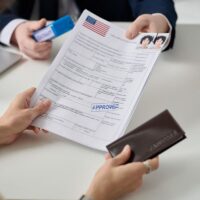Labor Certifications Explained

Whether you are an employer or a potential employee, your goal is the same: a smooth and successful immigration process. Obtaining labor certification is an essential part of that process. Below, we explain what labor certifications are, the process for obtaining one, and why they are crucial for employment-based immigration. For help with labor certifications and related matters in New York City, contact Gladstein & Messinger P.C. for advice and representation from a skilled and experienced Queens employment-based immigration lawyer.
What Is a Labor Certification?
A labor certification is a vital step in the employment-based immigration process. It is a document issued by the U.S. Department of Labor (DOL) that verifies there are no qualified U.S. workers available, willing, and able to fill a specific position. Furthermore, it ensures that hiring a foreign worker will not negatively affect the wages and working conditions of similarly employed U.S. workers.
Labor certifications are essential because they serve as a safeguard for the U.S. labor market. By requiring employers to demonstrate the need for foreign workers, the DOL ensures that the employment of foreign nationals does not disadvantage American workers. This process protects both the domestic workforce and the integrity of the immigration system.
The Labor Certification Process at a Glance
1. Job Description and Requirements
The process begins with the employer clearly defining the job position. This includes detailing the duties, requirements, and qualifications needed for the job. It is crucial for the job description to be accurate and specific to avoid potential issues during the certification process.
2. Prevailing Wage Determination
The employer must obtain a prevailing wage determination from the DOL. This step ensures that the wage offered to the foreign worker meets or exceeds the average wage for similar positions in the geographic area. This protects U.S. workers from being undercut by lower wages offered to foreign workers.
3. Recruitment Process
The employer is required to conduct a recruitment process to demonstrate that there are no qualified U.S. workers available for the position. This involves:
-
Placing a job order
with the State Workforce Agency (SWA) serving the area of intended employment.
-
Posting the job opportunity
in newspapers of general circulation on two different Sundays.
-
Posting the job internally
at the place of employment for at least ten consecutive business days.
For professional positions, additional recruitment steps may be required, such as job fairs, on-campus recruiting, or using recruitment agencies.
4. Filing ETA Form 9089
After completing the recruitment process, the employer files ETA Form 9089, Application for Permanent Employment Certification, with the DOL. This form includes detailed information about the job, the recruitment efforts, and the results of those efforts.
5. Review and Decision
The DOL reviews the application to ensure all requirements have been met and that the recruitment process was conducted in good faith. If the DOL finds everything in order, it will issue the labor certification. If there are deficiencies or questions, the DOL may request additional information or audit the application.
6. Next Steps in the Immigration Process
Once the labor certification is approved, the employer can move forward with filing Form I-140, Immigrant Petition for Alien Worker, with the U.S. Citizenship and Immigration Services (USCIS). This is a crucial step in the process of obtaining an employment-based green card.
Contact Gladstein & Messinger for Help With Employment-Based Immigration in New York
At Gladstein & Messinger, we are dedicated to helping employers and employees navigate the complex labor certification process with ease. If you have any questions or need assistance with labor certification, please call 718-793-7800 or 800-339-0535 to speak with an experienced immigration attorney. We are here to guide you every step of the way.
